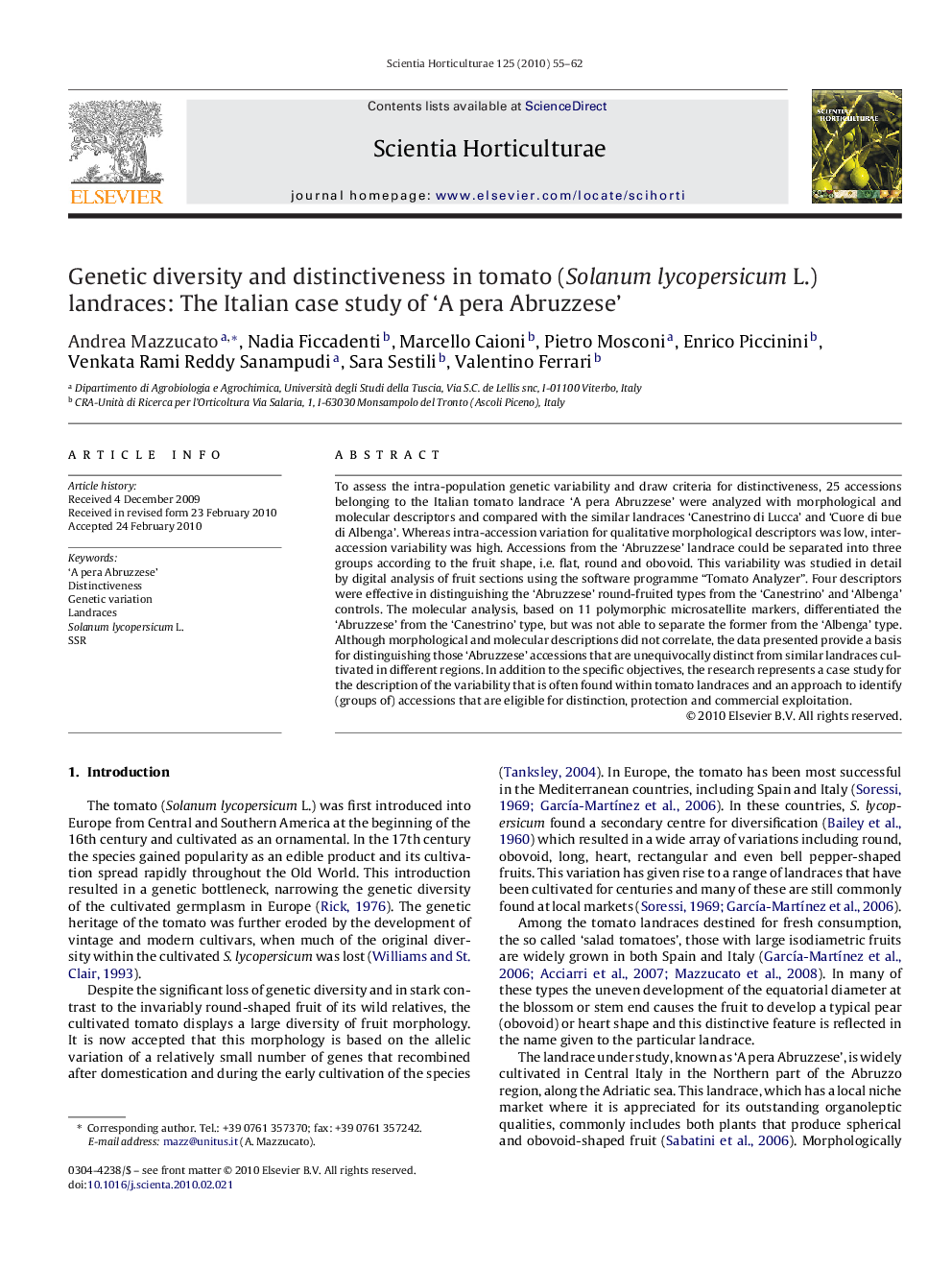| Article ID | Journal | Published Year | Pages | File Type |
|---|---|---|---|---|
| 4568893 | Scientia Horticulturae | 2010 | 8 Pages |
To assess the intra-population genetic variability and draw criteria for distinctiveness, 25 accessions belonging to the Italian tomato landrace ‘A pera Abruzzese’ were analyzed with morphological and molecular descriptors and compared with the similar landraces ‘Canestrino di Lucca’ and ‘Cuore di bue di Albenga’. Whereas intra-accession variation for qualitative morphological descriptors was low, inter-accession variability was high. Accessions from the ‘Abruzzese’ landrace could be separated into three groups according to the fruit shape, i.e. flat, round and obovoid. This variability was studied in detail by digital analysis of fruit sections using the software programme “Tomato Analyzer”. Four descriptors were effective in distinguishing the ‘Abruzzese’ round-fruited types from the ‘Canestrino’ and ‘Albenga’ controls. The molecular analysis, based on 11 polymorphic microsatellite markers, differentiated the ‘Abruzzese’ from the ‘Canestrino’ type, but was not able to separate the former from the ‘Albenga’ type. Although morphological and molecular descriptions did not correlate, the data presented provide a basis for distinguishing those ‘Abruzzese’ accessions that are unequivocally distinct from similar landraces cultivated in different regions. In addition to the specific objectives, the research represents a case study for the description of the variability that is often found within tomato landraces and an approach to identify (groups of) accessions that are eligible for distinction, protection and commercial exploitation.
